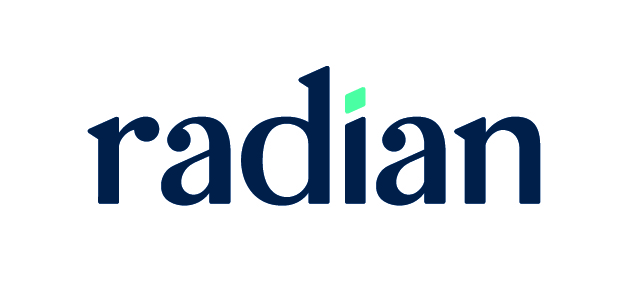OTHER NEWS
The Learning Center
Our Learning Center ensures that every reader has a resource that helps them establish and maintain a competitive advantage, or leadership position. For instance, loan originators and brokers will have one-click access to resources that will help them increase their productivity. Search topics by category and keyword and generate free videos, webinars, white papers and other resources. If you would like to add your content to the learning center, please click here or email Tim Murphy at [email protected].
Radian Rebrands Its Companies Under One Radian Model
- Thursday, 18 October 2018
- Lending

Radian currently operates as a family of companies that includes Radian Guaranty, Radian Reinsurance, Clayton Holdings, Green River Capital, ValuAmerica, Entitle Direct, and Red Bell Real Estate. Going forward these companies will operate under the new Radian brand. The rebranding reflects the company’s strategy to offer more than just individual solutions through silos.
“Unlike traditional mortgage insurance companies, we have reach into a lot of different sectors. By bringing everything together under one brand, we are building industry awareness of this cross-sector reach and encouraging conversations around solutions that span across our businesses, " said Zoe Devaney, SVP of marketing and customer experience for Radian. “We have a lot of data in these businesses. By leveraging this data, we are also going to be able to craft new solutions to the mortgage and real estate industries.”
The company goal is to bring together decades of risk management expertise with the power of data, technology and analytics and to allow for an a more agile, more insightful approach to business.
Radian Chief Executive Officer Rick Thornberry said, “For our team at Radian, our One Radian model means that they are part of something much larger. The combined strength of our unified team, our broad set of products and services, our innovation, and our service culture makes us an even better and stronger business partner for our customers.”
Read more...
Wells-eOriginal Deal Could Mean Wider E-Note Adoption
- Wednesday, 17 October 2018
- Lending

Wells Fargo Home Lending will now be using e-Original’s e-vault platform to accept e-notes as collateral. The decision to deploy the platform could tip the balance in favor of widespread industry adoption of the technology. One of the factors driving the the lack of adoption—Fannie Mae and Freddie Mac accepted e-mortgages, but few investors did--was the concern over the legality and enforceability of e-notes as security in the investor community. But with Wells Fargo committing to the technology, the possibility for far more widespread adoption among lenders has increased.
“The acceptance of e-notes fits our digital strategy,” said Brian Webster, SVP and strategic planning manager for Wells Fargo Home Lending. “Earlier this year we introduced an online mortgage application for our retail division, now we are introducing e-notes for our secondary market. This is a natural evolution of our end to end strategy and shows where our focus is and the direction in which Wells is going.”
Wells Fargo originated $42 billion in mortgages in the first quarter, for a market share of 12%, based on total mortgage industry origination volume of $356 billion. During a digital mortgage session at the conference, Webster said 28% of Well’s September originations came through the digital channel and he expects that to increase.
“The e-vault system, which time stamps and tracks access,allows for a better borrower experience, ensures compliance, reduces the operational cost around QC, reduces operational risk, increases capital efficiency and improve secondary market execution,” said Simon Moir, SVP and general manager of digital mortgages at eOriginal. Increasing the efficiency of the end-to-end process will also allow lenders a more efficient use of warehouse lines and reductions in their float and hedging costs.
One of the largest aggregators of mortgages, Wells acceptance of e-notes provides a significant liquidity channel for correspondents originating electronically and could set the tone for an industry-wide digitization of the secondary market similar to what is developing on the originations side. With other big banks expecting large e-origination volumes in the coming years, it might be natural for them to develop secondary channels for e-notes as well.
Flagstar Unveils New Products, Tech Plans; Fratantoni: Origination Volume to Rise 4.2%
- Wednesday, 17 October 2018
- Lending

Flagstar Unveils New Products, Tech Plans
Flagstar has unveiled some new lending products and plans some digital mortgage initiatives in 2019.
“Flagstar Last Friday rolled out some new products. A standalone HELOC for brokers and correspondents. Also, it began offering construction jumbo fixed and adjustable rate mortgage loans,” said Kristy Fercho, president of mortgage for Flagstar Bank. As for the non-QM arena, Flagstar is interested in looking at it from the firm’s risk appetite through aggregators. Currently, non-QM business is conducted through a subsidiary, OPES Advisors, and the transactions are completed through the retail division of Flagstar.
On Flagstar’s technology road map for 2019 is to develop the capability for borrowers to start a loan application at 1 a.m. in the morning, from their home, and then walk into a branch or a brokerage office and complete the application Flagstar could be the first in the mortgage industry to offer this capability—saving borrowers time, aggravation and frustration.
MBA’s Fratantoni Forecasts 4.2% Increase in Originations
The Mortgage Bankers Association projects $1.24 trillion in purchase mortgage originations in 2019--a 4.2 percent increase from 2018. MBA anticipates refinance originations will continue to trend lower next year, decreasing by 12.4 percent to $395 billion.
Overall in 2019, total mortgage originations are forecasted to decrease to $1.63 trillion from $1.64 trillion this year. In 2020, MBA is forecasting purchase originations of $1.27 trillion, and refinance originations of $410 billion, for a total of $1.68 trillion.
"The unemployment rate is at its lowest level in almost 50 years, resulting in faster wage growth and more confident homebuyers. While the Federal Reserve is expected to increase short-term rates further, 30-year mortgage rates should rise only modestly from here," said Mike Fratantoni, MBA chief economist and senior vice president for research and industry technology. "We are seeing some deceleration in the rate of home price growth, but believe this is a healthy pause for the market, as it will allow income growth to catch up to the recent run-up in home values."
Fratantoni believes that housing demand should continue to grow over the forecast horizon, with the pace of home sales held back primarily by the constrained pace of new building. He expects that home purchase originations will increase each year from 2019-2021, and that pace should continue to increase beyond the forecast horizon, given the wave of millennial buyers beginning to hit the market.
"While the macroeconomic and housing market backdrops are, and should remain quite favorable, the mortgage industry continues to be challenged by the drop in origination volume, coupled with significant margin compression," said Fratantoni. "Lenders of all types and sizes are seeing elevated costs, coupled with intensely competitive pricing, to capture more volume. This in turn is depressing revenues."
The Fed will raise rates in December, and then three times in 2019, bringing the fed funds target to about 3 percent, projects the MBA. The 10-year Treasury rate will increase to about 3.4 percent and then level out, bringing 30-year mortgage rates to around 5.1 percent.
With the economy is running at full employment, Fratantoni expects that monthly job growth will average 120,000 in 2019, down from the monthly gains of 200,000 seen this year.
"The unemployment rate will decrease to 3.5 percent by the end of 2019, which should continue to keep housing demand at a healthy level, ultimately leading to an increase in purchase originations," said Fratantoni. MBA revised its estimate of originations for 2017 to $1.76 trillion from $1.71 trillion, reflecting the most recent data reported in the 2017 Home Mortgage Disclosure Act data release.
Read more...
Real Estate Investment Funds, Executives Facing Federal Charges
- Friday, 12 October 2018
- Lending

The Securities and Exchange Commission today announced charges against two real estate investment funds and four executives in connection with their alleged roles in misleading investors by failing to disclose that it could not pay its distributions and was using money from a newer fund to pay distributions to investors in the older fund. Also, the SEC also charged a fifth executive for allegedly signing false SEC filings.
According to the SEC’s complaint, United Development Funding is a family of private and publicly-traded investment funds that deploys investor capital as loans to homebuilders and land developers. UDF allegedly solicited investors by advertising annualized returns of up to 9.75 percent as well as regular distributions.
According to the complaint, for almost five years, UDF did not tell investors that it lacked the monthly cashflow at times to cover investor distributions in one of its older funds, UDF III. Instead, to pay these distributions, the newer UDF IV fund loaned money to developers who had also borrowed money from UDF III. Rather than using those funds for development projects that were underwritten by UDF IV, UDF directed the developers to use the loaned money to pay down their older loans from UDF III.
In most of these cases, the developer never received the borrowed funds at all, and UDF simply transferred the money between funds so that UDF III could make the distributions to its investors. UDF III, UDF IV, and UDF executives Hollis Greenlaw, Benjamin Wissink, Theodore Etter, and Cara Obert knew or should have known that they had misled investors about the use of funds and the nature and status of loans made to developers.
The complaint also alleges that UDF III failed to appropriately impair loans in violation of GAAP, and that UDF IV did not adequately disclose the status of real property within its portfolio. Finally, the complaint alleges that David Hanson signed false and misleading SEC filings and management representation letters without taking sufficient actions to ensure the accuracy of or a sufficient basis for many of their representations.
Without admitting or denying the SEC’s allegations, Greenlaw, Wissink, Etter, and Obert agreed to pay $8.2 million in disgorgement, prejudgment interest, and civil penalties. Hanson agreed to pay a $75,000 civil penalty. The defendants consented to the entry of final judgments that order them to be permanently enjoined from violating Sections 17(a)(2) and (3) of the Securities Act of 1933, and the disclosure, books and records and internal accounting control provisions of Sections 13(a), 13(b)(2)(A), and 13(b)(2)(B) of the Securities Exchange Act of 1934 and Rules 12b-20, 13a-1, and 13a-13 thereunder. Greenlaw and Obert consented to also be enjoined from violating the certification provisions of Exchange Act Rule 13a-14.
The SEC’s investigation was conducted by David Whipple, David Hirsch, Keith Hunter, and Keefe Bernstein, and supervised by Eric Werner of the SEC’s Fort Worth Regional Office.
Read more...

